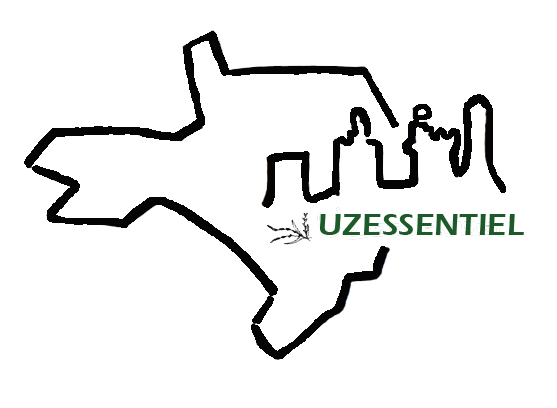Visit to Deaux and Méjannes-lès-Alès
On your way to Alès, why not make a short detour and visit the village of Deaux, a few kilometres from the Alès exhibition centre? Then head for Méjannes-lès-Alès, where the local Meduz brewery has recently opened.
 The village of Deaux, located about ten kilometres from Alès and 30 from Uzès, is dominated by the campanile housing the village clock.
The village of Deaux, located about ten kilometres from Alès and 30 from Uzès, is dominated by the campanile housing the village clock.
The name of the village, evolving over the centuries, from Deleis in 955, Dau, Deux, then Deucium in 1376, Daus, and Deucium... gets its current name, Deaux, in reference to Cardinal de Deaulx, who stayed there (born at the castle of Blauzac, Doctor of Law, Bertrand de Deaulx was provost of the church of Embrun, then archbishop, in 1323. He stayed in Tarbes, then in Sicily, and joined Avignon once he became a cardinal). However, some people think that Deaux refers to the numerous springs in and around the village...
Between Protestantism and Catholicism (Deaulx belonged at the time to the parish of Sauzet, diocese of Uzès), the village has its own history - and stories, in the Gard. Its narrow streets are now home to some beautiful old buildings, such as this corner tower, the wash house down the village, which recalls the work of the local washerwomen, and the clock tower...
This bell tower, which welcomes the visitor to the centre of the village, is a perfect setting for the clock, which is the work of the famous Jura "clock-making house of France", Louis-Delphin Oddobey (1858/1964).
Visiting Deaux also allows you to discover some 20 capitelles, which rise here and there. It's up to you to find them!
 The Deaux coat of arms: Or, a lozenge cross Argent and Sable, The most: The Aéroclub Alès Cévennes (on the aerodrome founded in 1975), Les Garrigues, a stone's throw from Deaux, offers discovery flights around Alès and the Cévennes, and initiation flights.
The Deaux coat of arms: Or, a lozenge cross Argent and Sable, The most: The Aéroclub Alès Cévennes (on the aerodrome founded in 1975), Les Garrigues, a stone's throw from Deaux, offers discovery flights around Alès and the Cévennes, and initiation flights.
More information, sources: Deaux town hall website, article by André Brunel (municipal bulletin, 1994).
Now, take the direction to Méjannes-lès-Alès, which, like Deaux, is part of the 72 communes of the Alès Agglomération. While Deaux has just over 650 inhabitants, Méjannes-lès-Alès has 1,230 (Map of the Agglo, Alès.fr).
 Located on the departmental road, the Alès exhibition centre arrived in Méjannes-lès-Alès almost 50 years ago, in 1975. A vast complex that can accommodate 3,000 to 4,500 visitors, it is ideally located about ten minutes from the centre of Alès.
Located on the departmental road, the Alès exhibition centre arrived in Méjannes-lès-Alès almost 50 years ago, in 1975. A vast complex that can accommodate 3,000 to 4,500 visitors, it is ideally located about ten minutes from the centre of Alès.
The name Méjannes-lès-Alès is used since the "beginning of the 20th century". It is said to have its origins in the medieval name Mediana, the town in the middle... Then came Mejanoe in 1217, then Méjanes, and Méjanes-des-Allais in 1715 (Cévennes tourisme.fr).
The visit culminates in the Château d'Oc, whose towers with pointed roofs dominate the region.
On the outskirts of the village flows the Droude. The river begins in Saint-Just-et-Vacquières and runs for more than 22 km before flowing into the Gardon, of which it is a tributary, at Brignon.
 The coat of arms: Ermine, on a lozenge of silver and vert (Vert - sinople in French - is a heraldic colour relating to metals, enamels or furs. On the coat of arms of Méjannes-lès-Alès, the Vert (sinople) is green. Originally, the Vert (sinople) was meant for the red colour).
The coat of arms: Ermine, on a lozenge of silver and vert (Vert - sinople in French - is a heraldic colour relating to metals, enamels or furs. On the coat of arms of Méjannes-lès-Alès, the Vert (sinople) is green. Originally, the Vert (sinople) was meant for the red colour).
Good to know: The Meduz brewery, founded in 2012 in Uzès, has moved to 341 Avenue Antoine Emile, in Méjannes-lès-Alès.





